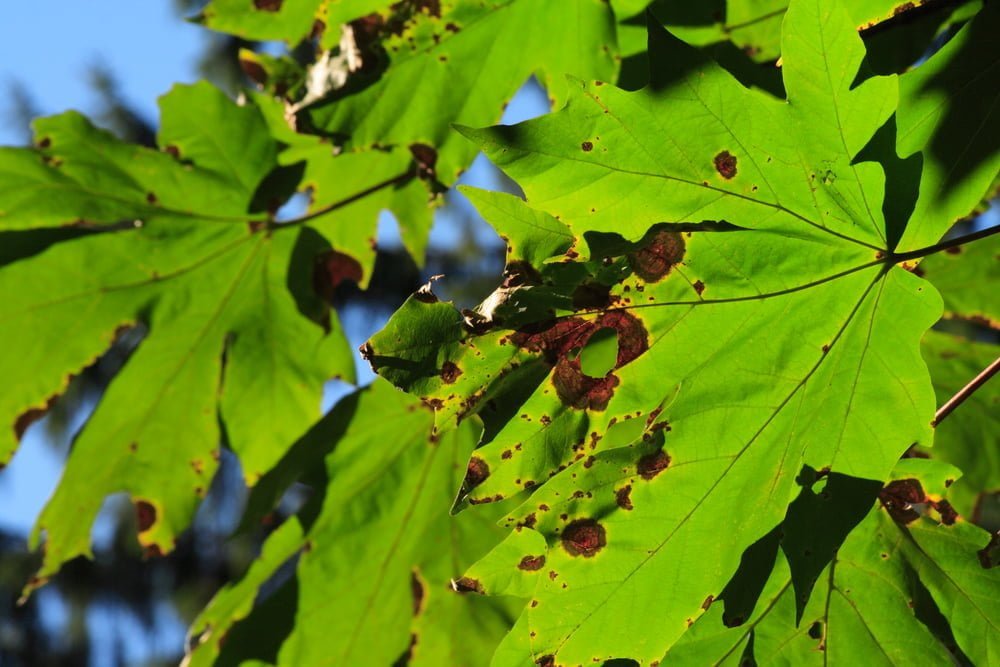
Sometimes it’s just plain hard to tell a garden disease from a pest problem, when
something goes wrong in with your plants.
But, just as with most issues in life, identifying the problem is the first step to fixing it.
Read on for some tips and tricks for troubleshooting your garden or landscape ills.
Step 1: Look for Symptoms of Disease
When we say that your plants are diseased, it means they are infected with some sort of
bacteria, virus or fungi.
Here are some of the most common ways your plants can be affected by disease:
- Blights. This is when the branches, leaves, flowers or stems of the plant wilt,
wither and then die. - Cankers. This mostly impacts woody plants and it will produce sunken, dead
looking patches on the stems and branches. They can ooze, and often what they
ooze is sticky and can smell bad. - Galls. This produces overgrown patches that almost look like swelling on the
leaves or the stem tissues of plants. - Leaf curl. Pretty much exactly as it sounds with this you will notice discolored and
possibly deformed leaves. - Leaf spots. The name says it all. Irregular areas on the leaves that can be any
color. - Mildew. You will notice dusty gray, white or purple patches on the top or
underside of the leaves. - Rots. If the plant tissue is soft, discolored or it’s dying it can be caused by a fungi
or bacteria. - Rusts. These will be orange or yellow coatings or spots.
Step 2: Look for Evidence of Pests
If you know what to look for, you should be able to tell what – if anything – is literally
eating your plants. Three common classifications of pests will attack your garden. These
are:
- Sucking pests. These pests like to remove the sap of plant tissues. You can tell
you have these pests by wilting leaves, curling, new growth distortion, spots,
growth stunting, or a sticky substance on the leaves. Commonly, aphids,
mealybugs, whiteflies, scale insects and spider mites cause this type of damage. - Chewing pests like to eat the leaves and stems of the plant or burrow into plant
tissue. You may notice holes in the leaves, missing leaf tissue, silvering on the
leaf or burrowing in stems, trunks or branches. Tent caterpillars, webworms,
bagworms, beetles and borers do this type of damage. - Boring pests. These pests aren’t dull, and they like to attack trees and shrubs by
boring into the plant. You may notice sawdust, at the base of the plant caused
from the boring. Asian ambrosia beetles are an example of this pest.
Step 3: Seek Additional Resources
Unfortunately, as you may have guessed, it can be hard to tell the difference between
curling, withered leaves that have been victimized by pests as opposed to disease.
One of the best resources for additional information as well as helpful photos is the USU
Extension. You can check their pest and diseases page, or even take advantage of their
diagnostic desk.
Of course, the knowledgeable staff at Millcreek Gardens can also help. Contact us
today to learn more about how we can help you keep your landscape and plants healthy
year around, and avoid pests and garden disease.


